KL Plaszow, Krakow’s Nazi Camp for Slave Labor
Krakow’s wartime concentration camp in the city’s right-bank district of Plaszow was hell on earth even if in terms of the sheer volume of atrocities it paled in comparison with such conglomerates of the nazi death industry as Auschwitz or Majdanek. At its peak capacity the Plaszow camp incarcerated 25,000 inmates at one time: men, women, and children. In total, over three years of its existence, roughly 150,000 people suffered imprisonment here – Jews of Krakow and from Poland’s other cities as well as Hungary, Czechoslovakia, France, Belgium, and Romania but also numerous Poles and Romanies. They were subjected to inhumane treatment, hellish living conditions, diseases, starvation, grueling slave labor, frequent beatings, and torture, and many fell victim to brutal killings. More than 80,000 of the Plaszow inmates died before the end of World War II, most in the gas chambers of Auschwitz-Birkenau.
Origins of the Plaszow camp dated back to the summer of 1940 when the German occupation authorities set up in the area a forced-labor camp for the Polish prisoners. The proper concentration camp was built in Plaszow in 1942. On January 14, 1945 the last group of inmates left for Auschwitz.Geography of Krakow’s Plaszow concentration camp.
The concentration camp took up the southwest outskirts of Plaszow district which is part of Krakow’s Podgorze borough on the right bank of Wisla river. The Plaszow proper – the Polish correct spelling Płaszów, pronounced Puashoof – lies to the northeast behind Krakow Plaszow train station at a crucial railroad junction.
The KL Plaszow concentration camp was situated just four kilometers or so southeast from Krakow’s Rynek Glowny central square. At first, it was set up on grounds of two adjoining Jewish cemeteries, one at 25 Jerozolimska street, another at 8 Abrahama street. Later on the camp was expanded and eventually its area peaked at about 197 acres that stretched north of today’s Kamienskiego street to Jerozolimska street and east of Swoszowicka street to Heltmana street. Since the end of World War II the site has been left undeveloped in commemoration of the martyrdom of the KL Plaszow inmates.
Almost no trace of the Plaszow camp has survived except few nondescript buildings such as the former villa of the commandant. The nazis have enough time and spared no effort to liquidate the Plaszow concentration camp thoroughly in the fall of 1944. The inmates were made to dismantle all timber shacks that served as their living quarters as well as other facilities, bodies were exhumed from mass graves and cremated on the site with ashes trucked away. Nowadays the place looks like a wasteland but the municipality plans to turn it soon into an ingenious commemorative park.
Points of interest
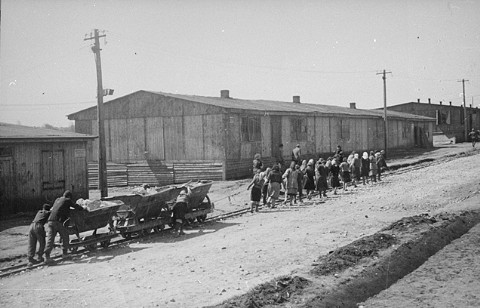
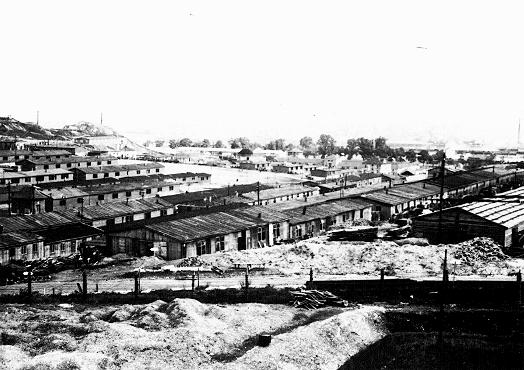
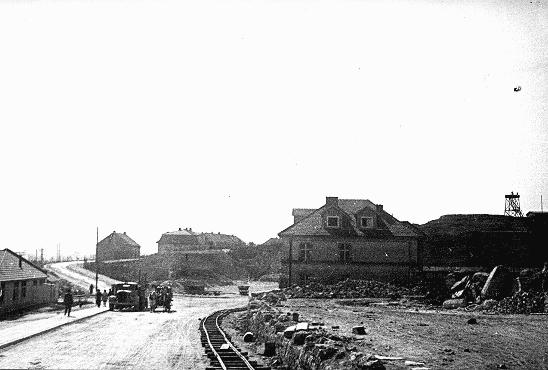
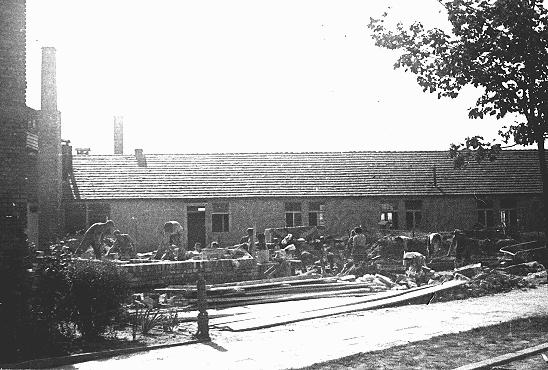
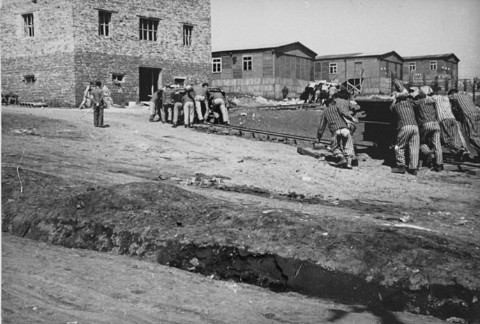
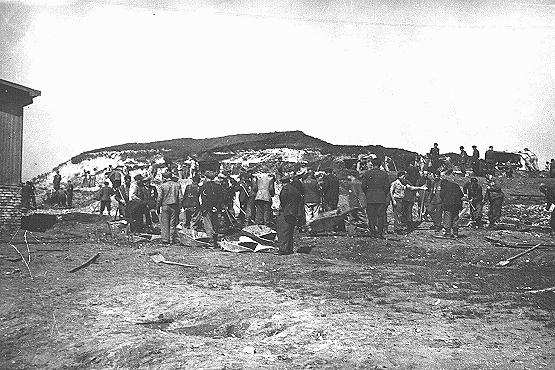

The start of the walk around this site started from the Grey house. The so-called Szary Dom (literally Grey House, at ul. Jerozolimska 3) is also preserved where Unterscharführer Albert Hujar, SS-Hauptscharführer Edmund Zdrojewski, Oberscharführer Lorenz Landsdorfer, Ekert, and Glaser - SS-men infamous for their cruelty - lived. In the basement, they arranged a torture cell, which - according to the memories of those saved from the camp - no one left alive.








The ruins of the pre-burial hall at the Plaszow concentration camp. This had been completed and built in 1932. In 1942 the Germans turned the site into a work camp. The gravestones on the site were torn down and laid flat in order to pave the streets and line the barracks of the new camp. This building existed in the Jewish cemetery before the camp was built over it. The Germans used the hall as stables for horses and livestock and as a pigsty. They later blew it up after finding hidden pieces of the Torah inside the walls. The remainder of the building was then blown up in 1946.













Krakow’s wartime concentration camp in the city’s right-bank district of Plaszow was hell on earth even if in terms of the sheer volume of atrocities it paled in comparison with such conglomerates of the nazi death industry as Auschwitz or Majdanek. At its peak capacity the Plaszow camp incarcerated 25,000 inmates at one time: men, women, and children. In total, over three years of its existence, roughly 150,000 people suffered imprisonment here – Jews of Krakow and from Poland’s other cities as well as Hungary, Czechoslovakia, France, Belgium, and Romania but also numerous Poles and Romanies. They were subjected to inhumane treatment, hellish living conditions, diseases, starvation, grueling slave labor, frequent beatings, and torture, and many fell victim to brutal killings. More than 80,000 of the Plaszow inmates died before the end of World War II, most in the gas chambers of Auschwitz-Birkenau.
Origins of the Plaszow camp dated back to the summer of 1940 when the German occupation authorities set up in the area a forced-labor camp for the Polish prisoners. The proper concentration camp was built in Plaszow in 1942. On January 14, 1945 the last group of inmates left for Auschwitz.Geography of Krakow’s Plaszow concentration camp.
The concentration camp took up the southwest outskirts of Plaszow district which is part of Krakow’s Podgorze borough on the right bank of Wisla river. The Plaszow proper – the Polish correct spelling Płaszów, pronounced Puashoof – lies to the northeast behind Krakow Plaszow train station at a crucial railroad junction.
The KL Plaszow concentration camp was situated just four kilometers or so southeast from Krakow’s Rynek Glowny central square. At first, it was set up on grounds of two adjoining Jewish cemeteries, one at 25 Jerozolimska street, another at 8 Abrahama street. Later on the camp was expanded and eventually its area peaked at about 197 acres that stretched north of today’s Kamienskiego street to Jerozolimska street and east of Swoszowicka street to Heltmana street. Since the end of World War II the site has been left undeveloped in commemoration of the martyrdom of the KL Plaszow inmates.
Almost no trace of the Plaszow camp has survived except few nondescript buildings such as the former villa of the commandant. The nazis have enough time and spared no effort to liquidate the Plaszow concentration camp thoroughly in the fall of 1944. The inmates were made to dismantle all timber shacks that served as their living quarters as well as other facilities, bodies were exhumed from mass graves and cremated on the site with ashes trucked away. Nowadays the place looks like a wasteland but the municipality plans to turn it soon into an ingenious commemorative park.
Points of interest
Massive granite monument towers over Kamienskiego street, one of Krakow’s busy arteries, on the southern edge of the former Plaszow concentration camp. Designed by accomplished architect Witold Ceckiewicz, it was erected in 1964 to commemorate the victims of all nationalities. It bears an inscription in Polish that reads ‘In homage to martyrs murdered by the Nazi perpetrators of genocide in the years 1941 to 1945’.
Another memorial, a boulder with a plaque, is situated on the sites’ northeast edge, at Jerozolimska street.
Former ‘villa’ of the camp commandant stands in disrepair at 22 Heltmana street. The gray building at 3 Jerozolimska street once served as a barracks housing the camp’s detachment of the SS troops while its basement contained a torture chamber.
An inanimate nature reserve called Rezerwat Bonarka abuts on the monument at Kamienskiego street. The 2.3-hectare area extending west to Swoszowicka street has been turned into a reserve in 1961 to protect the limestone rocks that once formed the seabed of a Jurassic lagoon.
The Plaszow concentration camp adjoined Kamieniolom Liban, an old limestone quarry started in 1884. The now derelict quarry, situated west of the Plaszow site up Swoszowicka street, was turned into a penal camp of the nazi ‘construction service’ – Das Straflager des Baudienstes im Generalgouvernement. Between 1942 and 1944 its inmates worked in ghastly conditions suffering from exhaustion, starvation, maltreatment, sunstroke in summers and exposure in winters; many died. Wartime victims of the Liban camp are commemorated by a monument of 1948 but otherwise there is no trace of the camp and the abandoned quarry might be dangerous for trespassers.
The historical archive photos:











The bars of the windows for the basement.



One of four notices that i came across that are located around the approaches to the former camp.






Looking towards the Grey house.








Sara Schenirer memorial matzevah
Sara Schenirer, founder of the Beth Jacob School – the first religious school for girls in Kraków (1917), which became a model for Jewish schools all over Poland in her time (over 300 before she died in 1935), and for many schools in Israel, the US and elsewhere today.

Though not directly related to the camp (which was yet to be built), this memorial remembers the site where 13 Poles were murdered by the Nazis on September 10th, 1939 – the first mass execution of WWII in Kraków.


























This residential street was known as ‘SS-strasse’ during the war for it was here that the Nazi officers lived, including camp commandant Amon Goeth at number 22, known as the ‘Red House.’ You can see the back of the house by making a detour onto ul. Lecha.










At Plaszow Amon Goeth passed his mornings by using his high-powered, scoped rifle to shoot at children playing in the camp. Rena Finder, one of Schindler's Jews then 14 years old, later remembered Goeth as "...the most vicious and sadistic man..."
Another Schindler-Jew, Poldek Pfefferberg, recalled Goeth this way: "When you saw Goeth, you saw death."
A survivor, Arthur Kuhnreich, later told about Amon Goeth in his Holocaust Memories: "I saw Goeth set his dog on a Jewish prisoner. The dog tore the victim apart. When he did not move anymore, Goeth shot him."




A modest wooden cross crowned with barbed wire marks the general vicinity of one of Plaszow Concentration Camp's two mass execution sites. The name is a vulgar bit of Polish word play taken from the name of the SS officer who ordered the first executions here (Albert Hujar) and the Polish word for the male member; a print-friendly translation would be ‘Prick’s Hill.’ Known as 'Hujarowa Hill,' 'H-Hill' or sometimes 'Goat Hill' in English, the site was hardly a hill at all, but actually a pit measuring 50 metres in circumference and 5m deep. Victims were told to undress before being shot in groups and stacked in layers - alternating head to toe - and sprinkled with dirt. The first victims were Jews liquidated from the ghetto in Bochnia in either late August or early September 1943, and executions were carried out almost daily until mid-February 1944 when it could no longer be used. Barracks were then built on top of Hujowa Górka and executions were moved to Cipowy Dołek (upon which the Memorial Of Torn Out Hearts presently stands) in plain view of prisoners toiling in the camp's workshops. Though the site was moved, the original name was still used by many of the prisoners, and it is impossible to know exactly how many people, mostly Jews, were murdered at the two sites. Estimates range from 10,000 to 5,000, with 8,000 as the most commonly cited estimate.

This is built at the top of the hill at the Plaszow concentration camp. It reads: "Here, on this spot, in the years 1943-45, thousands of Jews brought here from Poland and Hungary were tortured, murdered and incinerated. We do not know their names, but let us replace them with one: the Jews. Here, in this place, one of the most severe crimes was committed. Human language knows no words to describe its atrocity, its unspeakable bestiality, its ruthlessness or its cruelty. Let us replace them with one word: Nazism. The Jews who survived the Nazi pogrom pay homage to the memory of those murdered, whose final scream of despair is this Plaszow cemetery's silence."




From here you can see the large stone monument, which stands atop Płaszów’s other main execution yard. Towering over not only the camp, but also the highway towards which it unfortunately faces, this monolithic Soviet-era monument is known as the ‘Memorial of Torn-Out Hearts.’ Designed by Witold Cęckiewicz and unveiled in 1964, the inscription reads, “To the memory of the martyrs murdered by the Nazi perpetrators of genocide in the years 1943-45.”























Though not directly related to the camp (which was yet to be built), this memorial remembers the site where 13 Poles were murdered by the Nazis on September 10th, 1939 – the first mass execution of WWII in Kraków.

It was so hot that it was decided to go and get something to drink. On the way down to the local garage i found the usual evidence of a concrete access road and this intriguing building hidden some distance into the trees.

















Steps and base to another hut slightly to the rear.



To the left of the building overlooking the road.















A view of the infamous balcony where Amon Goeth (so legend has it), shot the inmates of the concentration camp using a hunting rifle. This is actually factually incorrect and the house is not in line of sight of the camp with is sat down an incline. Goeth did shoot inmates but chose to do so from a vantage point overlooking the camp. When doing so he wore his hunting hat and experienced inmates of the camp soon learnt to hide while he was out for some 'fun'. Over the period of time that Goeth was Kommandant he killed approximately 500 people personally.
Another Schindler-Jew, Poldek Pfefferberg, recalled Goeth this way: "When you saw Goeth, you saw death."
A survivor, Arthur Kuhnreich, later told about Amon Goeth in his Holocaust Memories: "I saw Goeth set his dog on a Jewish prisoner. The dog tore the victim apart. When he did not move anymore, Goeth shot him."

The photograph that leads to the myth.



Hujowa Górka

This is built at the top of the hill at the Plaszow concentration camp. It reads: "Here, on this spot, in the years 1943-45, thousands of Jews brought here from Poland and Hungary were tortured, murdered and incinerated. We do not know their names, but let us replace them with one: the Jews. Here, in this place, one of the most severe crimes was committed. Human language knows no words to describe its atrocity, its unspeakable bestiality, its ruthlessness or its cruelty. Let us replace them with one word: Nazism. The Jews who survived the Nazi pogrom pay homage to the memory of those murdered, whose final scream of despair is this Plaszow cemetery's silence."










One of the quarry pits.


Located around the area are distant reminders that a camp existed on this site.





The remnants of part of the Jewish Cemetery on the site.









Thanks for viewing this report.
No comments:
Post a Comment